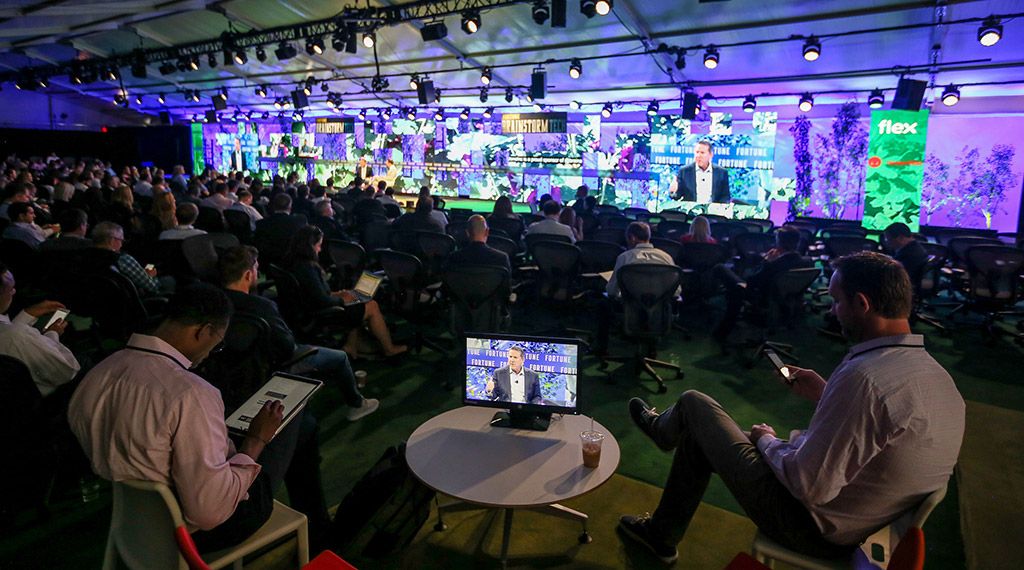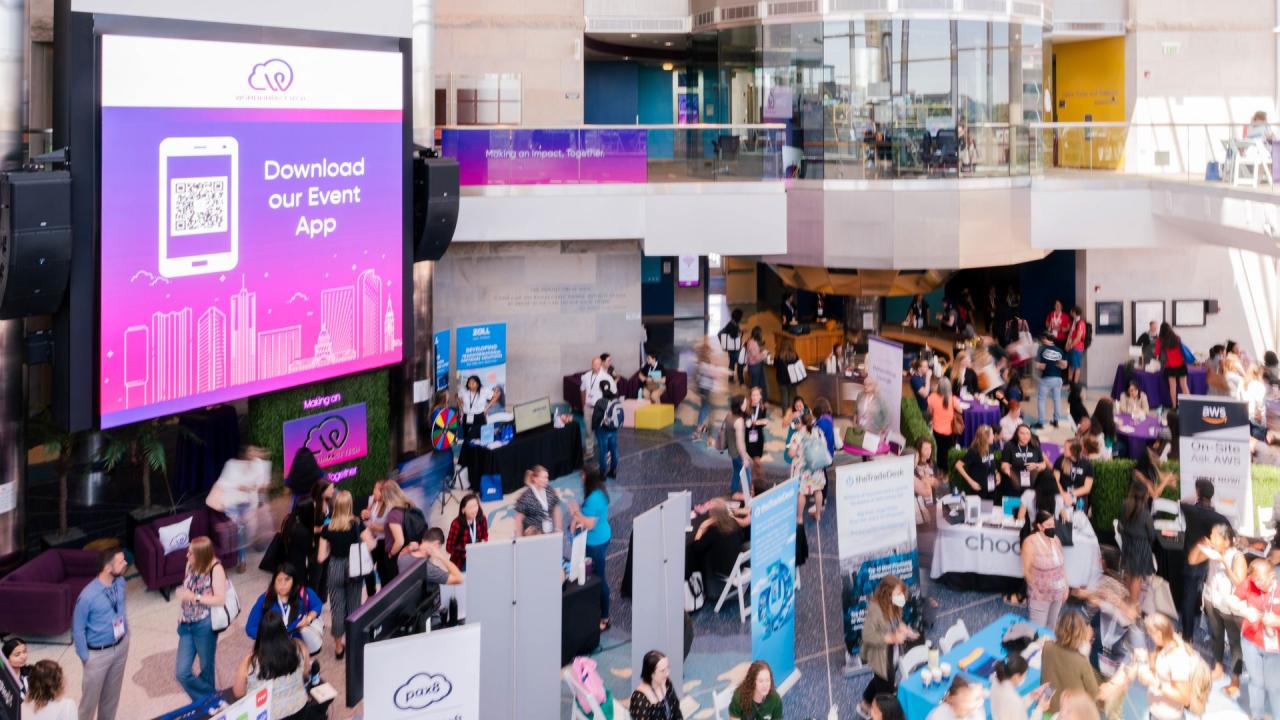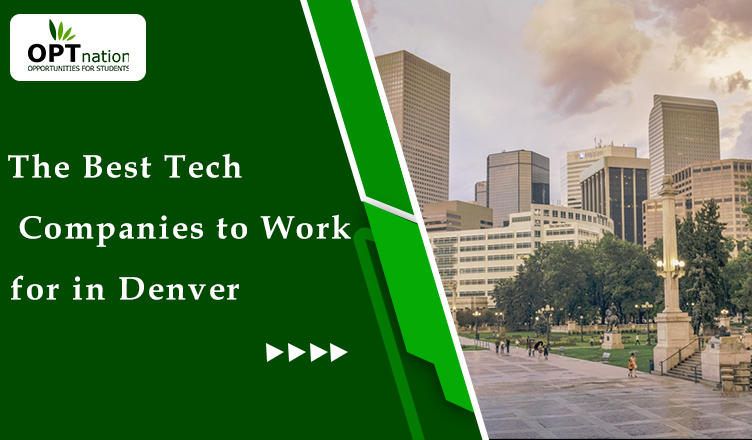MACH Technologies: A Modern Approach to Digital Architecture
MACH Technologies sets the stage for a revolution in digital architecture, promising businesses a more agile, scalable, and customer-centric approach. This acronym, standing for Microservices, API-first, Cloud-native, and Headless, encapsulates […]

MACH Technologies sets the stage for a revolution in digital architecture, promising businesses a more agile, scalable, and customer-centric approach. This acronym, standing for Microservices, API-first, Cloud-native, and Headless, encapsulates a fundamental shift towards modularity, flexibility, and seamless integration.
The MACH approach empowers businesses to build and deploy digital experiences with unparalleled speed and efficiency. By breaking down monolithic systems into smaller, independent microservices, businesses gain the agility to adapt quickly to changing market demands and user preferences. The API-first design allows for seamless integration with third-party services, while cloud-native development enables scalability and cost-efficiency. Headless architecture further enhances flexibility, enabling businesses to decouple the front-end from the back-end, providing greater control over user experience and content delivery.
Introduction to MACH Technologies
In the ever-evolving landscape of digital commerce, businesses are constantly seeking ways to enhance their agility, flexibility, and responsiveness. MACH technologies offer a revolutionary approach to building and managing digital experiences, empowering organizations to adapt to the dynamic demands of today’s market.
MACH stands for Microservices-based, API-first, Cloud-native, and Headless. These four core principles form the foundation of a modern and flexible architecture that enables businesses to create seamless and personalized customer experiences.
MACH Architecture and Its Core Principles
MACH architecture is a paradigm shift from traditional monolithic systems to a modular and interconnected ecosystem. It emphasizes breaking down complex applications into smaller, independent services, each responsible for a specific function. This modularity fosters agility, scalability, and maintainability, allowing businesses to easily adapt to changing requirements.
- Microservices: MACH architectures embrace the concept of microservices, which are small, independent services designed to perform specific tasks. Each microservice can be developed, deployed, and scaled independently, enabling faster development cycles and greater flexibility.
- API-first: MACH technologies prioritize APIs (Application Programming Interfaces) as the primary means of communication between different services and applications. This API-first approach allows for seamless integration and data exchange across the entire ecosystem, facilitating the creation of interconnected and personalized experiences.
- Cloud-native: Cloud-native architectures are integral to MACH technologies, enabling businesses to leverage the scalability, elasticity, and cost-effectiveness of cloud computing. This approach allows for rapid deployment, continuous integration, and automated scaling, ensuring optimal performance and resource utilization.
- Headless: Headless architectures decouple the presentation layer (front-end) from the backend logic and data. This separation allows businesses to use different front-end technologies and platforms while leveraging the same backend infrastructure. This flexibility empowers organizations to deliver consistent experiences across multiple channels, including websites, mobile apps, and voice assistants.
Benefits of Adopting MACH Technologies
Adopting MACH technologies offers numerous benefits for businesses, enabling them to stay ahead of the competition and deliver exceptional customer experiences.
- Enhanced Agility and Flexibility: MACH architectures promote agility and flexibility, allowing businesses to rapidly adapt to changing market conditions and customer demands. The modular nature of microservices and the decoupled architecture enable businesses to quickly implement new features, integrate with third-party services, and respond to evolving customer preferences.
- Improved Scalability and Performance: MACH technologies are inherently scalable, allowing businesses to handle increasing traffic and data volumes efficiently. Cloud-native architectures provide the necessary infrastructure to scale applications on demand, ensuring optimal performance and responsiveness even during peak periods.
- Enhanced Customer Experiences: By leveraging the power of APIs and headless architectures, businesses can deliver personalized and engaging customer experiences across multiple channels. MACH technologies enable seamless integration of data from various sources, allowing for tailored content and recommendations based on individual preferences.
- Reduced Costs and Increased Efficiency: MACH architectures can significantly reduce development and maintenance costs. The modular nature of microservices allows for independent development and deployment, minimizing dependencies and streamlining the development process. Cloud-native platforms also offer cost-effective solutions for infrastructure and resource management.
- Increased Innovation and Competitive Advantage: By embracing MACH technologies, businesses can unlock new possibilities for innovation and differentiation. The flexibility and agility of MACH architectures enable organizations to experiment with new technologies, explore emerging trends, and stay ahead of the competition.
Popular MACH-based Platforms and Technologies
Several popular platforms and technologies are driving the adoption of MACH architectures.
- Content Management Systems (CMS): Contentful, Strapi, and Prismic are examples of popular headless CMS platforms that enable businesses to manage and deliver content across multiple channels.
- Commerce Platforms: BigCommerce, Shopify Plus, and Salesforce Commerce Cloud are leading MACH-based commerce platforms that offer a wide range of features and functionalities for online businesses.
- Customer Relationship Management (CRM): Salesforce, HubSpot, and Microsoft Dynamics 365 are examples of CRM platforms that can be integrated with MACH architectures to provide comprehensive customer data and insights.
- API Gateways: Kong, Tyk, and Apigee are popular API gateways that provide security, management, and monitoring capabilities for APIs within MACH architectures.
- Cloud Platforms: AWS, Azure, and Google Cloud Platform are leading cloud providers that offer a wide range of services and tools for building and deploying MACH-based applications.
Key Components of MACH Architecture

The MACH architecture, an acronym for Microservices-based, API-first, Cloud-native, and Headless, is a modern approach to building and managing digital experiences. It is characterized by its flexibility, scalability, and agility, enabling businesses to adapt to changing market demands quickly.
Microservices, Mach technologies
Microservices play a crucial role in MACH architecture by breaking down monolithic applications into smaller, independent services. Each microservice focuses on a specific business function, allowing for easier development, deployment, and maintenance.
- Independent Deployment and Scaling: Each microservice can be deployed and scaled independently, enabling faster updates and improved resource utilization.
- Improved Resilience: The failure of one microservice does not affect the entire application, as other services continue to operate independently.
- Technology Flexibility: Different microservices can be built using different technologies, allowing businesses to choose the best tools for each specific function.
- Faster Development Cycles: Smaller codebases and independent deployments allow for faster development and release cycles.
API-First Design
API-first design is a fundamental principle of MACH architecture, where APIs are considered the primary interface for accessing and interacting with applications. This approach offers numerous benefits:
- Enhanced Interoperability: APIs enable seamless integration between different systems and applications, regardless of their underlying technology.
- Increased Flexibility and Agility: API-first design allows for easy adaptation to changing business requirements and integration with new technologies.
- Improved Developer Experience: APIs provide a clear and standardized way for developers to interact with applications, simplifying development and maintenance.
- Accelerated Innovation: APIs enable the rapid development and deployment of new features and functionalities by leveraging existing services.
Cloud-Native Development and Deployment
Cloud-native development and deployment are essential components of MACH architecture, enabling businesses to leverage the scalability, flexibility, and cost-effectiveness of cloud platforms.
- Scalability and Elasticity: Cloud platforms allow businesses to scale their applications up or down based on demand, ensuring optimal resource utilization and cost efficiency.
- Rapid Deployment and Updates: Cloud-native development and deployment enable faster deployment cycles and continuous updates, allowing businesses to respond quickly to market changes.
- Improved Reliability and Availability: Cloud platforms offer high availability and reliability, ensuring minimal downtime and uninterrupted service delivery.
- Cost Optimization: Cloud platforms provide a pay-as-you-go pricing model, allowing businesses to optimize costs based on actual usage.
Headless Architecture
Headless architecture separates the presentation layer (front-end) from the backend logic and data. This allows businesses to create personalized and engaging experiences across multiple channels using different front-end technologies, while maintaining a single backend system.
- Content Flexibility and Agility: Headless architecture enables businesses to deliver content to various channels, including websites, mobile apps, and digital signage, without modifying the backend.
- Improved Developer Experience: Headless architecture simplifies front-end development by providing a clear and consistent API for accessing data and functionality.
- Enhanced Customer Experience: Headless architecture allows for personalized and engaging experiences by enabling businesses to deliver content tailored to individual customer preferences and behaviors.
- Faster Time-to-Market: Headless architecture accelerates development cycles by allowing teams to work independently on front-end and backend components.
Implementing MACH Technologies
Migrating to a MACH architecture can be a complex process, requiring careful planning and execution. This section explores the steps involved in implementing MACH technologies, including the challenges and considerations, best practices for successful adoption, and examples of successful MACH implementations across various industries.
Steps Involved in Migrating to a MACH Architecture
The migration to a MACH architecture typically involves a series of well-defined steps, each with its own set of challenges and considerations.
- Assessment: The initial step involves a thorough assessment of the existing technology landscape, identifying current systems, their functionalities, and limitations. This step helps understand the existing architecture’s strengths and weaknesses, providing valuable insights for the migration process.
- Planning: Based on the assessment findings, a detailed migration plan is formulated, outlining the desired MACH architecture, the specific technologies to be adopted, the implementation timeline, and the resources required. This plan serves as a roadmap for the entire migration process, ensuring alignment and progress.
- Technology Selection: The selection of individual MACH components, such as headless CMS, API management platform, and microservices framework, is crucial. This selection should align with the organization’s specific needs, budget, and technical expertise. Careful consideration should be given to factors such as scalability, security, and integration capabilities.
- Implementation: The actual implementation involves configuring and integrating the chosen MACH components, migrating existing data and functionalities, and testing the new architecture. This phase requires close collaboration between IT teams, developers, and business stakeholders to ensure smooth and successful deployment.
- Testing and Deployment: Once the implementation is complete, rigorous testing is essential to validate the functionality, performance, and security of the new architecture. This involves various testing phases, including unit testing, integration testing, and user acceptance testing. The successful completion of testing allows for the deployment of the new MACH architecture to production.
- Monitoring and Optimization: Continuous monitoring of the MACH architecture is essential to identify any performance bottlenecks, security vulnerabilities, or other issues. Regular optimization efforts, including performance tuning and security updates, ensure the architecture’s long-term stability and efficiency.
Challenges and Considerations for MACH Implementation
Migrating to a MACH architecture presents several challenges and considerations, including:
- Technical Complexity: Implementing a MACH architecture involves integrating multiple independent technologies, requiring expertise in various domains, such as API development, microservices, and cloud computing. This complexity can increase development time and resource requirements.
- Integration Challenges: Seamless integration between different MACH components is crucial for the architecture’s functionality and performance. This can be a complex task, requiring careful planning and robust integration strategies to ensure smooth data flow and communication between different systems.
- Security Concerns: With a distributed architecture, security becomes a significant concern. Ensuring data security and protecting against potential vulnerabilities across multiple components is crucial. Implementing robust security measures and adhering to industry best practices is essential.
- Cost and Resources: Migrating to a MACH architecture can be a significant investment, requiring budget allocation for technology acquisition, development, and ongoing maintenance. Organizations need to carefully evaluate the costs and ensure they have the necessary resources to support the migration process.
- Change Management: Adopting a MACH architecture often involves significant organizational changes, impacting workflows, skillsets, and team structures. Effective change management strategies are crucial to ensure a smooth transition and minimize disruption to business operations.
Best Practices for Successful MACH Adoption
Several best practices can increase the likelihood of successful MACH adoption:
- Start Small and Iterate: Instead of attempting a complete overhaul, begin with a pilot project or a specific business function to test the MACH approach. This allows for gradual adoption, reducing risk and enabling iterative improvements based on initial learnings.
- Focus on Business Value: Clearly define the business goals and objectives that the MACH architecture aims to achieve. This helps prioritize efforts, measure success, and ensure alignment with the organization’s overall strategic direction.
- Invest in Skills and Training: Ensure that the team has the necessary technical skills and expertise to design, implement, and maintain the MACH architecture. Provide training and development opportunities to bridge any skill gaps and enhance the team’s capabilities.
- Embrace Agile Development: Adopt agile methodologies for development and implementation, fostering collaboration, flexibility, and continuous improvement. This allows for rapid iterations, quick feedback loops, and adjustments based on evolving needs and market dynamics.
- Partner with Experienced Vendors: Engage with experienced MACH technology vendors who can provide guidance, support, and best practices for successful implementation. This can leverage their expertise and reduce the learning curve for the organization.
Examples of Successful MACH Implementations
- Retail: Companies like Nike and Adidas have successfully implemented MACH architectures to improve their online shopping experiences, offering personalized recommendations, seamless checkout processes, and integrated loyalty programs.
- Financial Services: Banks and financial institutions have adopted MACH technologies to enhance customer engagement, provide personalized financial advice, and streamline online banking services. Examples include HSBC and Citibank, who have implemented MACH-based platforms for digital banking and wealth management.
- Media and Entertainment: Media companies like Netflix and Spotify have leveraged MACH architectures to create personalized content recommendations, offer subscription-based services, and manage their streaming platforms efficiently.
Future Trends in MACH Technologies
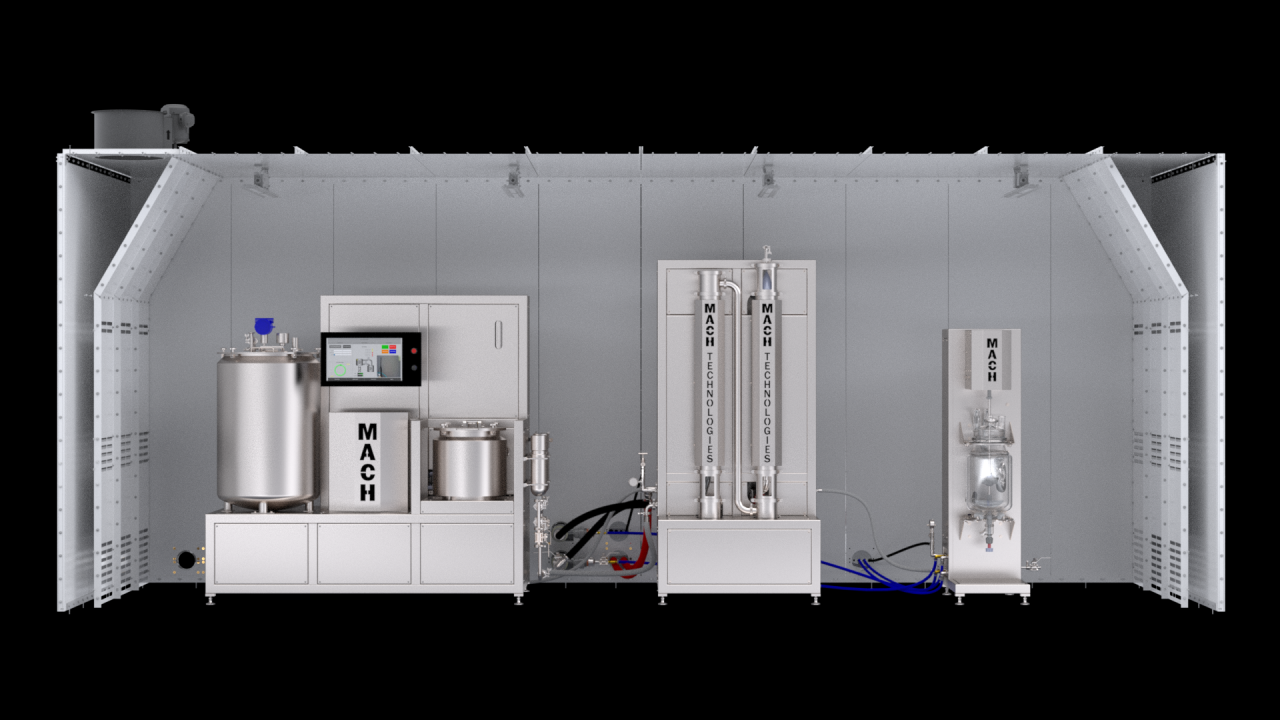
The MACH architecture, with its focus on flexibility and adaptability, is poised to continue its rapid evolution. As technology advances and business demands shift, we can expect to see several key trends shaping the future of MACH.
Emerging Technologies and Trends
The impact of emerging technologies on MACH development is undeniable. These technologies are not just influencing the design and implementation of MACH architectures but also driving innovation and enhancing the overall user experience.
- Artificial Intelligence (AI) and Machine Learning (ML): AI and ML are transforming how MACH applications are built and used. These technologies are enabling personalized experiences, automated processes, and predictive analytics. For instance, AI-powered chatbots can provide instant customer support, while ML algorithms can analyze data to optimize marketing campaigns.
- Serverless Computing: Serverless computing is gaining traction in the MACH landscape. This approach allows developers to focus on code without managing infrastructure, leading to faster development cycles and cost-effective scaling. For example, serverless functions can be used to handle specific tasks within a MACH application, such as processing data or sending notifications.
- Edge Computing: Edge computing brings computation and data storage closer to users, reducing latency and improving performance. In the context of MACH, edge computing can be used to deliver real-time experiences and enhance data security. For instance, a MACH application can leverage edge computing to provide personalized content based on a user’s location or device.
- Low-Code/No-Code Platforms: Low-code/no-code platforms are democratizing software development, enabling businesses to build MACH applications without extensive coding knowledge. This empowers non-technical users to contribute to application development, leading to faster innovation and reduced development costs. For example, a marketing team can use a low-code platform to create a personalized landing page for a specific campaign.
Impact on Business Functions
The adoption of MACH technologies is not just about technical advancements; it’s about enabling businesses to operate more efficiently and effectively.
- Enhanced Customer Experience: MACH architectures allow businesses to create personalized and engaging customer experiences. By integrating best-of-breed solutions, businesses can deliver tailored content, provide seamless interactions, and offer personalized recommendations.
- Improved Agility and Scalability: The modular and decoupled nature of MACH enables businesses to adapt quickly to changing market conditions and scale their operations seamlessly. This agility allows businesses to respond to customer demands, launch new products and services rapidly, and manage complex workflows effectively.
- Data-Driven Decision Making: MACH architectures facilitate the collection and analysis of data from various sources, enabling businesses to make data-driven decisions. This data-driven approach allows businesses to understand customer behavior, optimize marketing campaigns, and improve operational efficiency.
Predictions for the Future of MACH
The future of MACH is bright, with several key predictions shaping the landscape.
- Increased Adoption: The adoption of MACH technologies is expected to accelerate as businesses realize the benefits of flexibility, scalability, and improved customer experiences. More organizations will embrace MACH architectures to stay competitive in the digital landscape.
- Greater Integration with Emerging Technologies: MACH will become increasingly integrated with emerging technologies such as AI, ML, and edge computing. This integration will lead to more intelligent and personalized experiences, automated processes, and enhanced data security.
- Focus on Developer Experience: MACH will continue to focus on improving the developer experience. The availability of tools, frameworks, and resources will enable developers to build and deploy MACH applications more efficiently and effectively.
Closing Notes
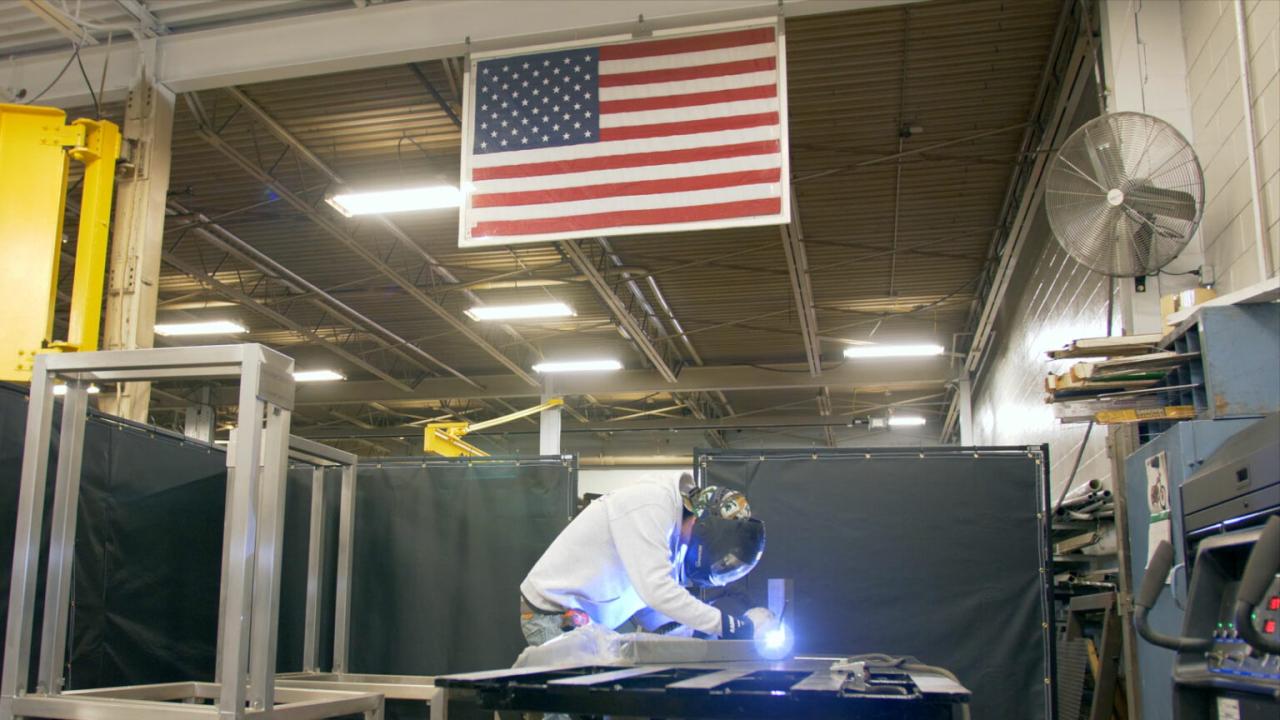
MACH Technologies is not just a technological trend but a paradigm shift in the way businesses approach digital architecture. By embracing the principles of microservices, API-first design, cloud-native development, and headless architecture, organizations can unlock a new level of agility, scalability, and customer-centricity. The future of digital experiences lies in embracing MACH, enabling businesses to stay ahead of the curve and deliver truly exceptional experiences.
Mach technologies are constantly evolving, and one exciting development is the integration of sweepstakes platforms. These platforms, like regal technologies sweepslots , offer a unique way to engage customers and drive brand loyalty. By incorporating sweepstakes into their marketing strategies, businesses can leverage the power of mach technologies to create compelling and interactive experiences for their audiences.

